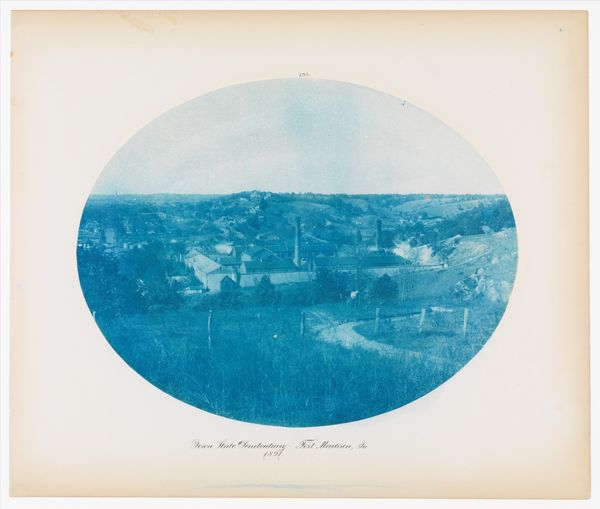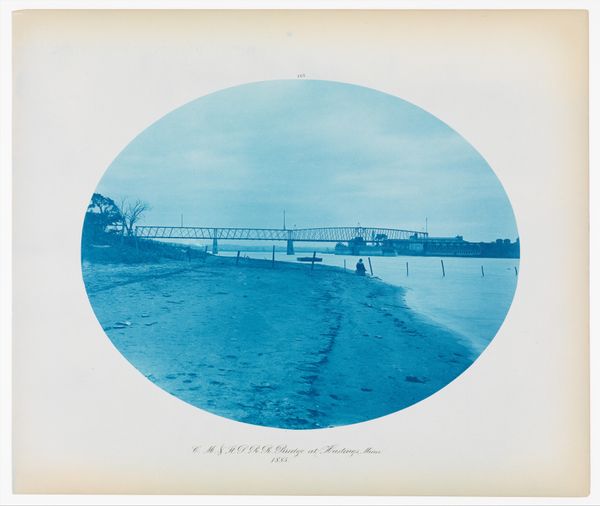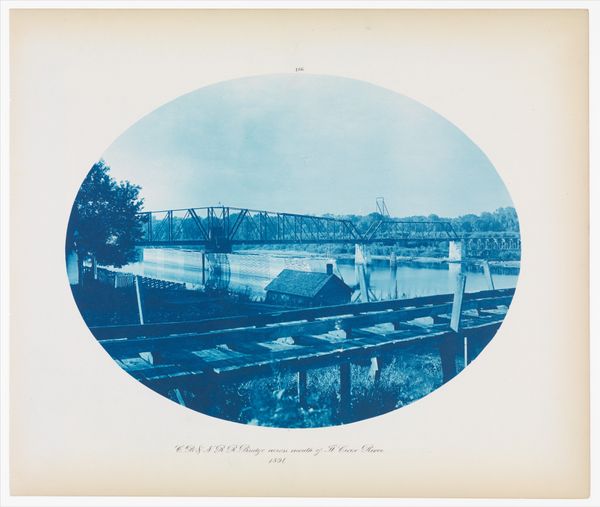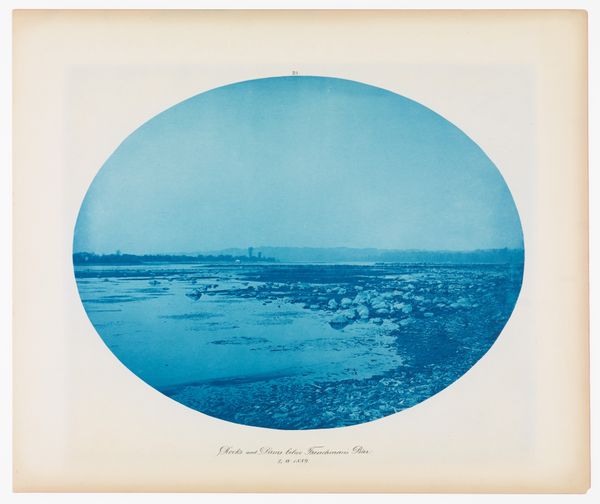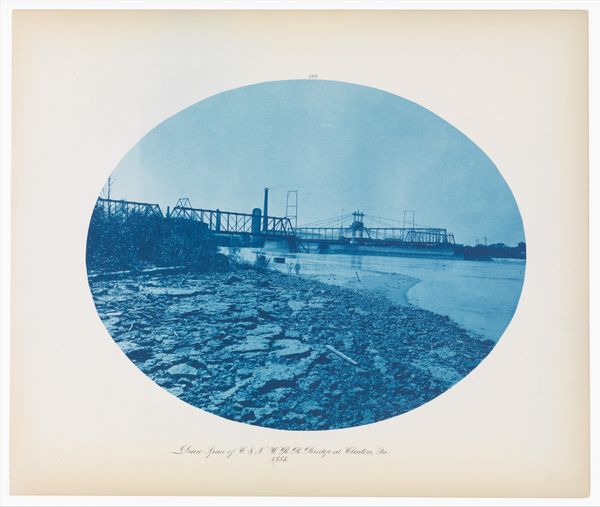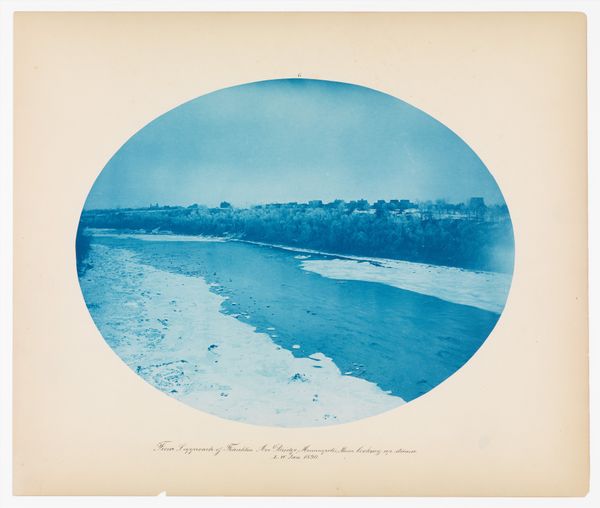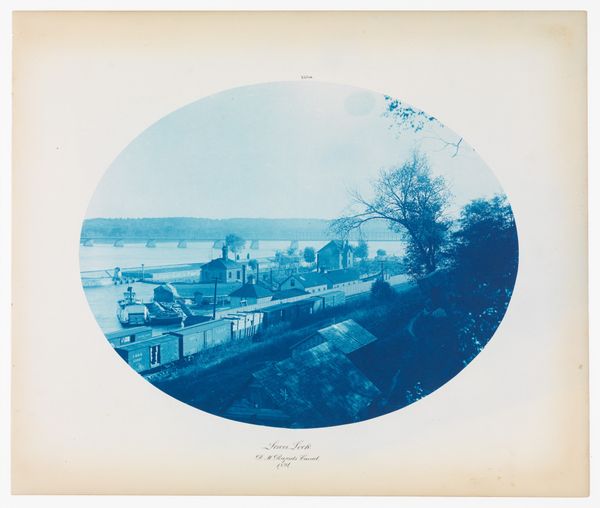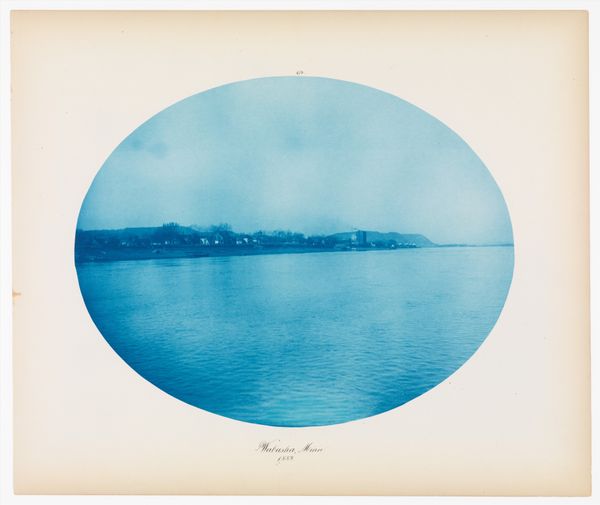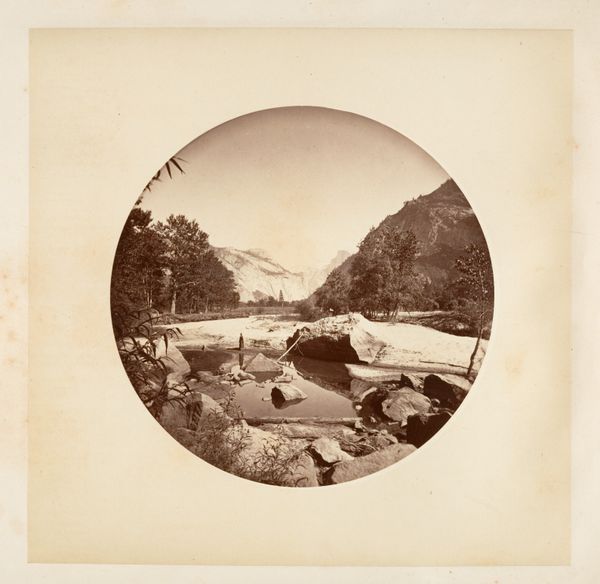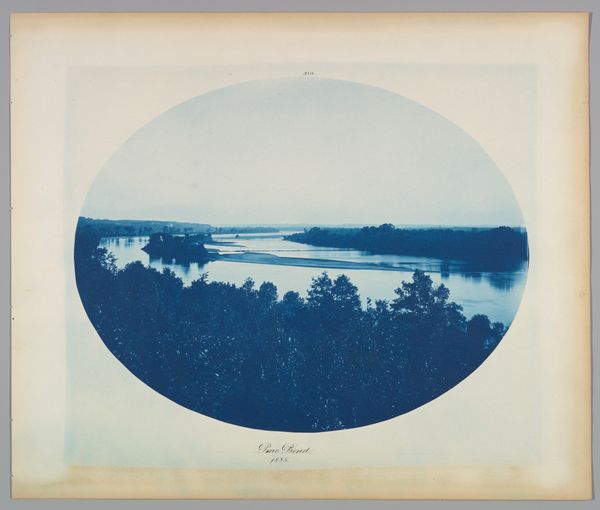
No. 201. U.S. Government Bridge at Rock Island, Illinois (High Water) 1888
0:00
0:00
print, cyanotype, photography
# print
#
landscape
#
cyanotype
#
photography
#
cityscape
#
realism
Dimensions: Sheet: 14 1/2 × 17 3/16 in. (36.8 × 43.7 cm)
Copyright: Public Domain
Curator: This is Henry Bosse’s cyanotype print from 1888, "No. 201. U.S. Government Bridge at Rock Island, Illinois (High Water)," currently housed at the Metropolitan Museum of Art. It's quite striking, don't you think? Editor: It’s melancholic. That intense Prussian blue…almost suffocating. It transforms a cityscape into something dreamlike, ethereal. I can't help but feel the weight of the history embedded in such a monochromatic vision. Curator: Exactly. Cyanotypes were an accessible medium, favored for technical drawings, blueprints. Bosse worked as a draughtsman for the U.S. Army Corps of Engineers. This image speaks volumes about the intersection of art and industry, the bridging of practical documentation with artistic expression. Editor: The bridge itself becomes a metaphor. Consider its location: Rock Island. What histories of labor, industry, and perhaps even conflict does this image silently carry? Who had access to this new technology of photography, and how did its distribution mirror the social stratification of the era? Curator: Good points. Bosse’s extensive use of cyanotype wasn't just about convenience. It points to the growing accessibility of photographic processes, impacting how infrastructure projects were visualized and understood. He documents progress, yes, but the *how* is key. The chemical process is an integral layer of meaning, as a tool of documentation, or creative choice? Editor: Right. This piece asks us to contemplate the relationship between technological advancement, documentation, and the human experience of change. The monochromatic hue hints at the complexity of human existence within systems. It’s a visual reminder that progress isn’t neutral, but laden with values, ethics, and social meaning. Curator: So, beyond aesthetics, we're drawn to questions about the materiality of record-keeping and the layers of labor, politics, and vision woven into this depiction. The print itself becomes a document ripe for analysis. Editor: And in that striking blue, we see not just a bridge, but also a connection to a much broader, historically and socially fraught landscape. Curator: A landscape we can further explore by studying the means, labor and materials through which this unique print was born.
Comments
No comments
Be the first to comment and join the conversation on the ultimate creative platform.
